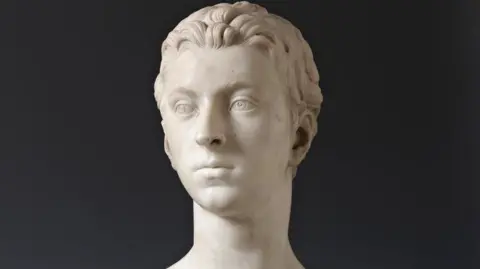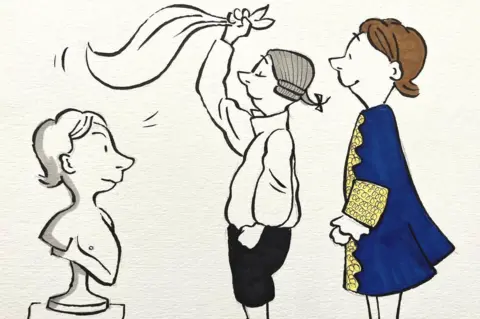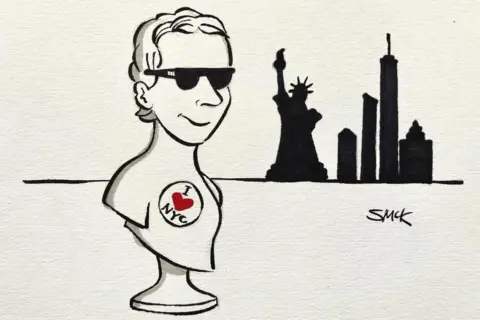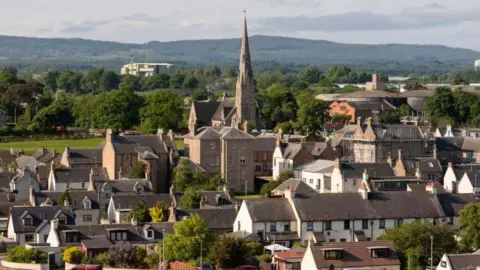A heads up on the £2.5m Invergordon bust saga
 High Life Highland
High Life HighlandHighland councillors have approved the sale of an artwork bought for £5 but could make £2.5m for a community fund.
The marble bust of Sir John Gordon was made by French artist Edmé Bouchardon.
Invergordon Town Council bought the artwork in 1930, but over the years it was mislaid and forgotten before being discovered on an industrial estate 26 years ago.
Who was Sir John Gordon?

The son of a banker, Gordon's family owned large areas of land in Sutherland and Ross-shire and established the town of Invergordon on the Cromarty Firth.
Gordon was a young man travelling through continental Europe when he met Bouchardon in Rome in 1728 and the sculpture was made.
Gordon became an MP in 1742.
Bouchardon would go on to create sculptures for the gardens of the Palace of Versailles, the former home of French royalty, and also made the Fontaine des Quatre-Saisons in rue de Grenelle, Paris.
What happened to the bust?
For years it was a feature of the Gordon family's Invergordon Castle, and survived a fire at the property in the 19th Century.
The local town council bought the artwork at an auction in Kindeace, near Invergordon, in 1930.
It is understood the bust was to be put on display in Invergordon Town Hall, but instead it was mislaid.
Records relating to the piece are thought to have been disposed of during local government reorganisation in the 1970s and 90s.

In 1998, the bust was found propping open a door in a Highland Council unit on an industrial estate in Balintore, about 14 miles from Invergordon.
Fast forward to 2014 and there was a bust-up over who owned the sculpture.
Highland Council said the art belonged to it but Rob Gibson, a local SNP MSP at the time, argued the sculpture was a community asset and belonged to Invergordon Common Good Fund.
In Scotland, common good funds go back to the 15th Century and involve land, investments and property that under law exist for the benefit of burgh residents.
Bust on tour

While Highland Council looked into the ownership issue the bust went on an international tour.
It was displayed at The Louvre in Paris and J Paul Getty Museum in Los Angeles, before returning to the Highlands.
For some time now it has been locked away in secure Highland Council storage.
The local authority says its insurers have warned that it should not be on public display due to its high value and "associated security implications".
Meanwhile, ownership has been cleared up and it was agreed it was a common good fund asset.
Now a private buyer has approached Highland Council, via auctioneers Sotheby's, with an offer of £2.5m.
In May, the council's Black Isle and Easter Ross committee agreed a sale should go ahead.
This proposal has been rubber stamped at a meeting of the full council.
Fifty councillors voted in favour of the sale, four supported an amendment seeking more time for further public consultation while 10 councillors abstained.
Councillor Maxine Smith said interest on the money made from the sale could be as much as £125,000 a year and this would be invested in the community.
Under the plans, a museum-quality replica would be commissioned for display in the Highlands.
Is everyone happy about selling it?
 Getty Images
Getty ImagesA public consultation held by Highland Council received almost 70 responses, and 48 were in favour of selling the sculpture.
But concerns have been raised about the artwork being sold off.
Two community councils - Invergordon and also Saltburn and Westwood Community Council - say people need more information and options on its future.
The groups argue revenue could be generated from the bust by keeping it.
Art historian Dr Bendor Grosvenor has also said it would be sad if the artwork was lost from public view.
